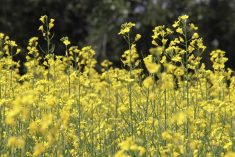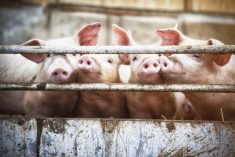Reuters – Milk prices in India could soon hit an all-time high, forcing the world’s biggest producer to step up imports to boost supplies and ease cost of living pressures.
Farmers are wrestling with a double whammy: a lethal cattle condition called lumpy skin disease and a drawdown in market-ready cattle stock after pandemic conditions slowed breeding. Lockdowns limited the number of available veterinarians to perform artificial insemination.
Lumpy skin disease, which causes blisters and reduces milk production in cows, has infected millions of cattle and killed more than 184,000 in India, according to government data.
Read Also

Boosting productivity could mean historic farm revenues
FCC report finds increasing productivity in the Canadian agriculture sector could mean $30 billion in farm revenue in the next decade
Milk prices have jumped more than 15 per cent over the past year, the fastest rise in a decade, making it difficult for the government to bring retail inflation below the central bank’s target.
The soaring prices of milk and other basic goods is expected to become a political issue heading into state elections later this year.
A 39 per cent jump in dairy product export in 2022, followed by lower milk supplies, has already cut inventories of butter and skimmed milk powder in India, even as rising incomes lift demand for protein-rich dairy products, which are a key source of calcium, vitamins and protein for a large vegetarian population.
Industry officials estimate demand for dairy products to rise seven per cent this year. But milk production is likely to have risen just one per cent in the fiscal year to March 2023, well below the average annual rate of 5.6 per cent in the past decade, said a senior official of the government-backed National Dairy Development Board.
The official declined be named, as he was not authorized to speak to the media.
Supply is bottlenecked, despite attractive higher prices for farmers.
Affordable cattle are in short supply, in contrast to conditions during the pandemic, when lockdowns weighed on milk consumption and prices dove.
Those losses prevented farmers from increasing herds, which restricted milk stock even during the so-called flush season that runs from October to February. Farmers and dairy managers say they now have to wait until the next flush season in October to ramp up market-ready cattle stocks and dairy products inventory.
Devendra Shah, chair of Parag Milk Foods, said the rare surge in milk prices during the flush season has created unusual market pressure, especially in the peak summer months.
“We will witness further rises in milk prices during summer,” Shah said.
Those pressures mean India will rely more on imported milk powder, farmers and dairy officials said, further tightening global supplies and setting off a rally in international prices.
In January, India’s milk and cream imports jumped 1,024 per cent from the last year to US$4.87 million.















